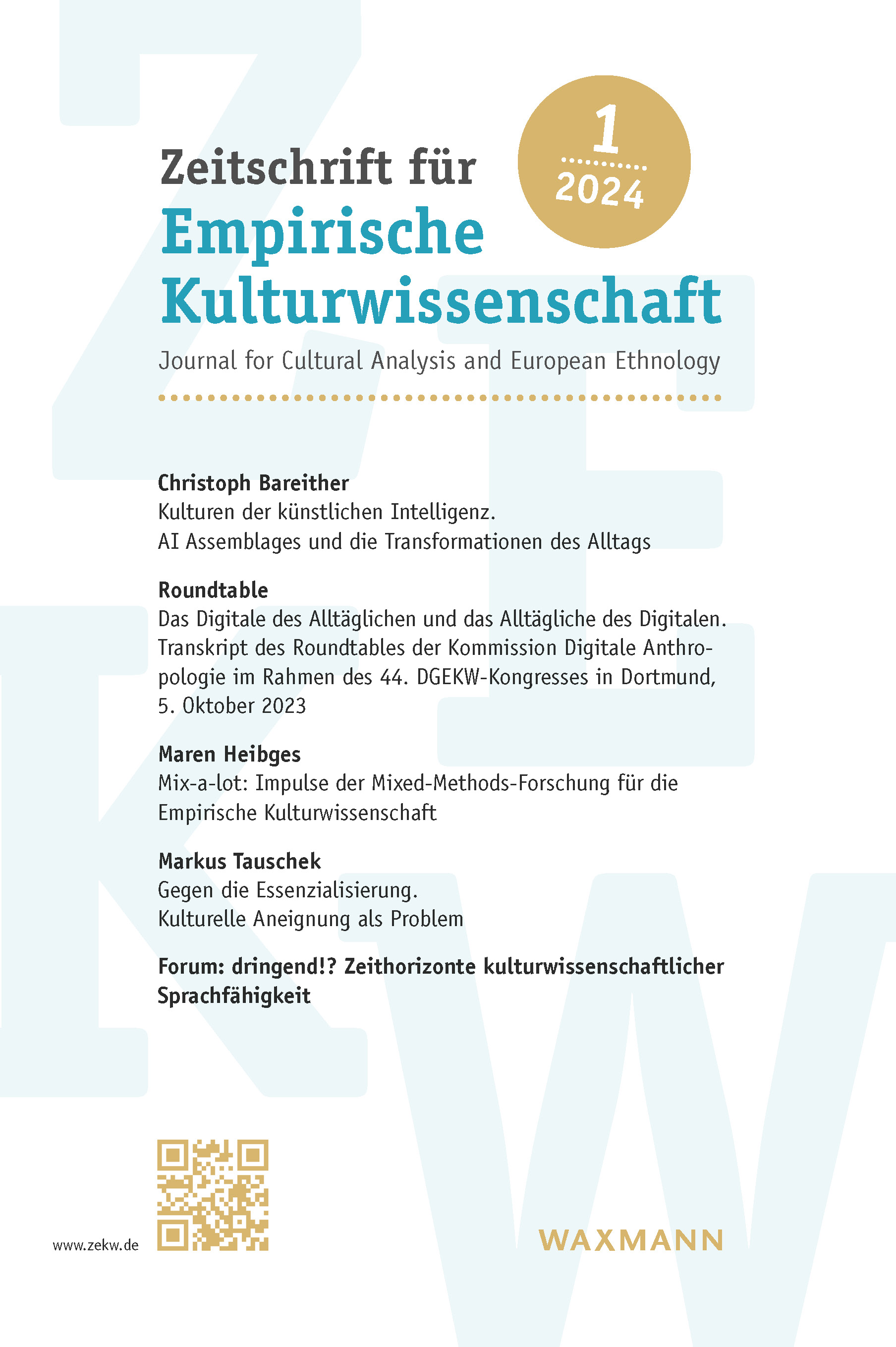Abstract
“Mixed Methods” refers to the combination of qualitative and quantitative research methods within a research design. The mixed methods approach is shaped by a research community which is primarily active in the USA. How can anthropologists and ethnologists, who want or need to work across methodological boundaries – such as in interdisciplinary projects, when they intend to generalize their research findings more broadly, or when quantitative findings form the starting point of their qualitative investigations – benefit from the methodological impulses of the Mixed Methods community? My contribution examines the conceptual premises of mixed methods research, presents the three typical mixed methods research designs (convergent design, explanatory sequential design, exploratory sequential design), discusses new visual approaches for analyzing and presenting heterogeneous research data, and identifies as impulses for anthropologies and cultural studies: 1) that the mixed methods discourse can be used for a multi-layered method explication, even within purely qualitative research, 2) that the Mixed Methods community provides a specific vocabulary for anthropologists and ethnologists to precisely articulate where they can most effectively apply their methodological expertise in a heterogeneous co-laboration.

This work is licensed under a Creative Commons Attribution 4.0 International License.
Copyright (c) 2024 Zeitschrift für Volkskunde

